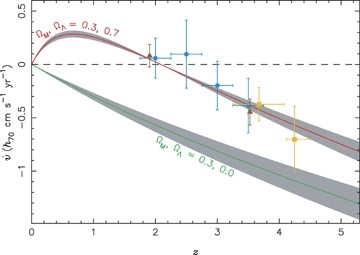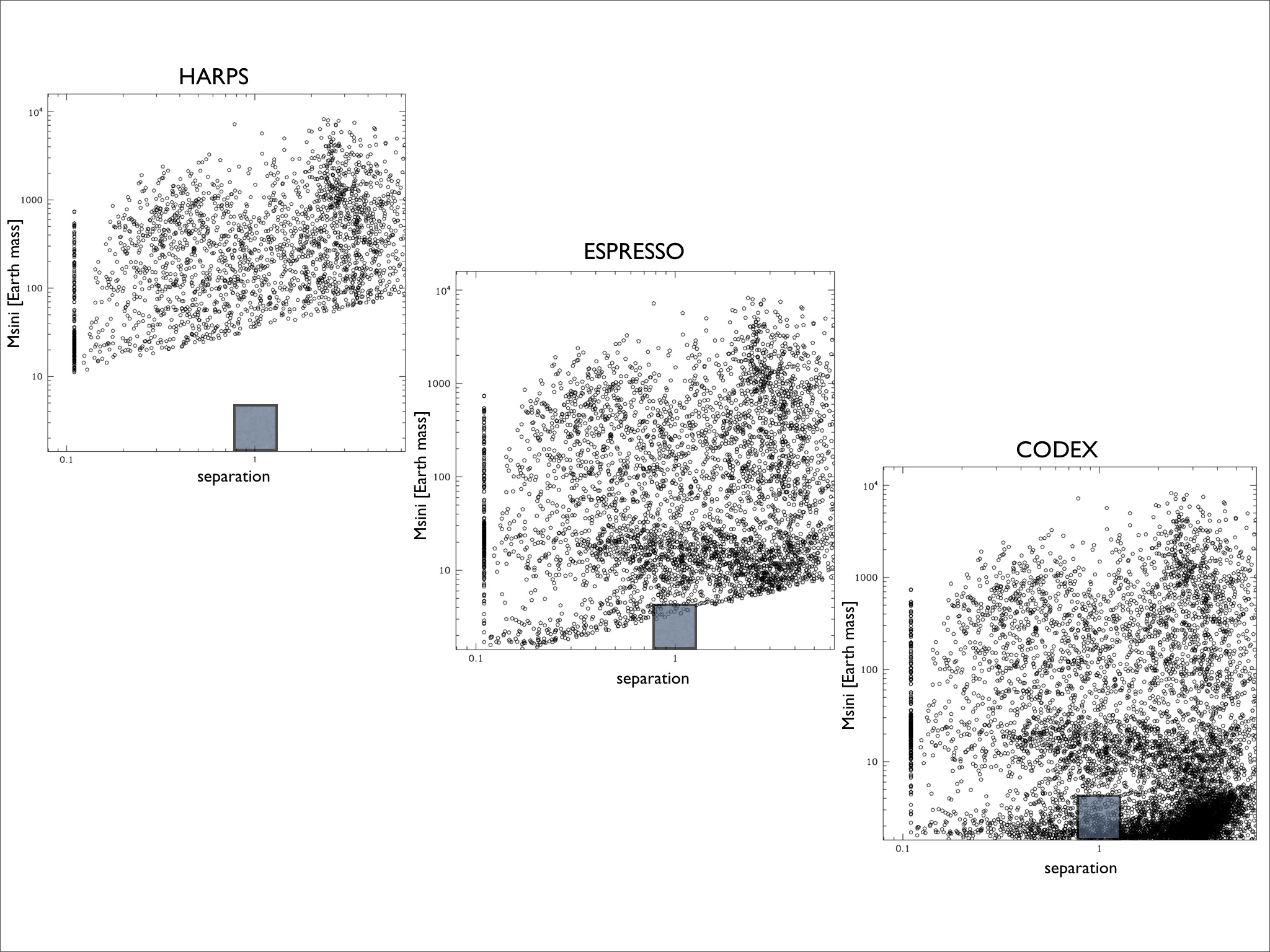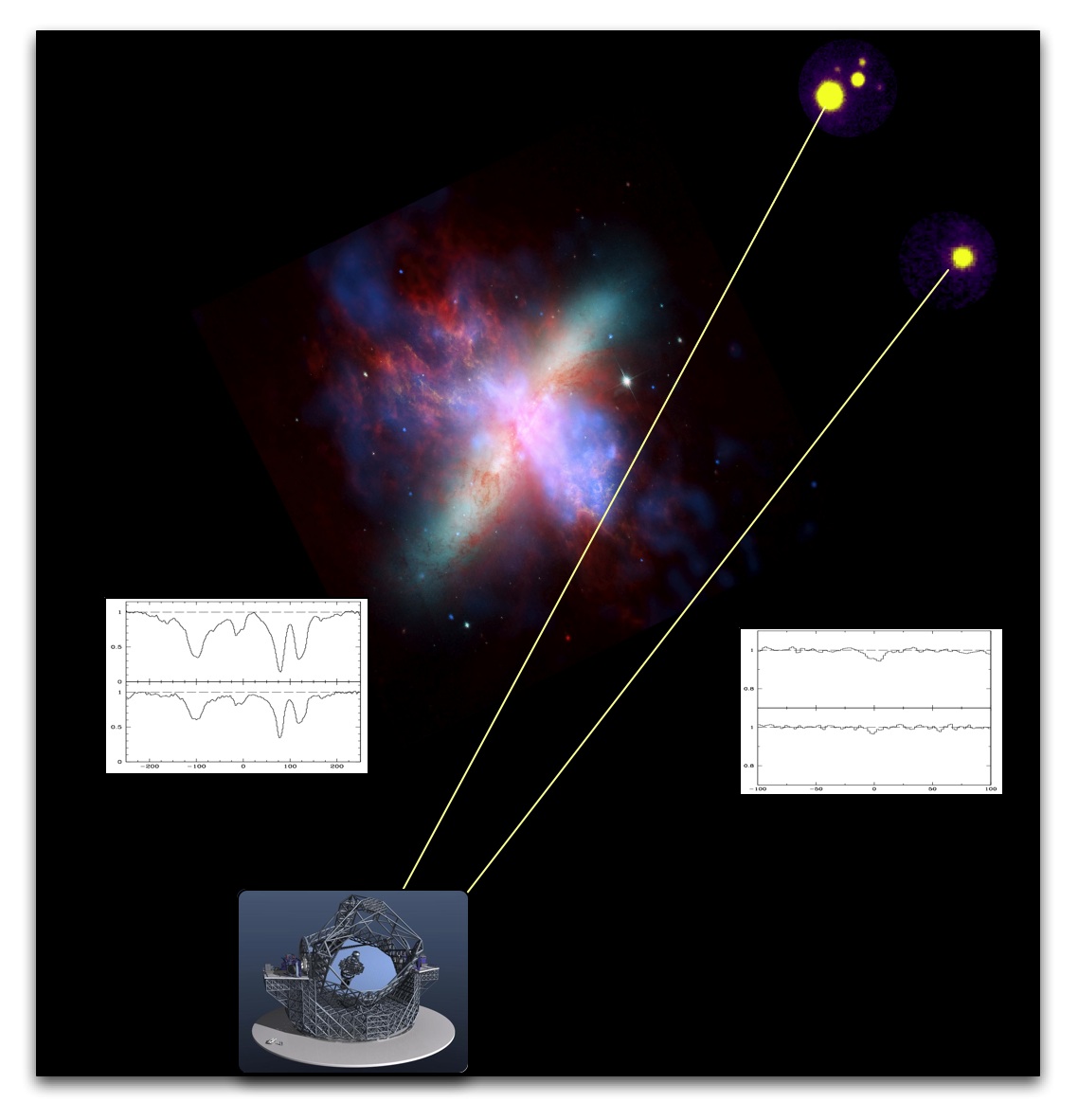CODEX Science Show Cases: all
The complete science document (as it was prepared for Phase A , Feb. 2010) is available here in pdf format.
-
A direct measurement of the accelerating expansion of the Universe: detecting and measuring the cosmological redshift drift of the Lyman-alpha forest.
The discovery that the expansion of the Universe appears to be accelerating has sparked intense interest in the observational exploration of the expansion history of the Universe. The most direct way of measuring the past expansion rate is to use an effect first discussed by Sandage (1962, ApJ, 136, 319). He showed that the evolution of the Hubble expansion causes the redshifts of cosmologically distant objects partaking in the Hubble flow to change slowly with time. Just as the redshift is in itself evidence of an expanding Universe, so is the change in redshift with time evidence its de- or acceleration.
This redshift drift is a very small effect but CODEX will be the first instrument capable of detecting it. The most favourable target for this experiment is the multitude of absorption features making up the Lyman-alpha forest in QSO absorption spectra (Loeb 1998, ApJ, 499, L111).
For more information, please read this Messenger article (pdf format).
Figure 1.
Monte-Carlo simulations of three different implementations of a redshift drift experiment. Plotted are values and errors of the "measured" velocity drift (vertical axis), expected for a total experiment duration of 20 yr, a total integration time of 4000 h and for standard cosmological parameters h70 = 1, OmegaM = 0.3, and Omegalambda = 0.7. The solid lines show the expected redshift drift for diffeent parameters as indicated, and h70 = 1. The grey shaded areas result from varying H0 by ±8 km/Mpc. See Liske et al. ("Cosmic dynamics in the era of Extremely Large Telescopes", 2008, MNRAS, 386, 1193) from which this figure is taken for more details.
Figure 2.
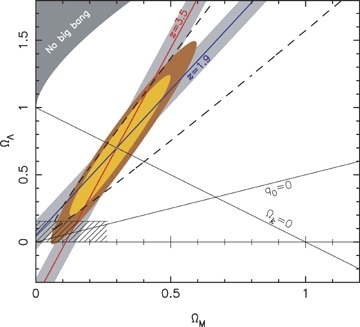
-
Detection of Earth twins in the Habitable Zone of solar-type stars.
The search for extra-solar earth-like planets which at least in principle could sustain life similar to that on our planet catches the imagination of scientists as well as that of the general public. The required accuracy for radial velocity searches to detect rocky planets in the habitable zone of 10 cm/s is in reach with the proposed HARPS-like spectrograph ESPRESSO for the VLT. With the 2 cm/s accuracy of CODEX it will be possible to assemble and study sizeable samples of earth-like planets in the habitable zone of their parent stars.
Figure 3.
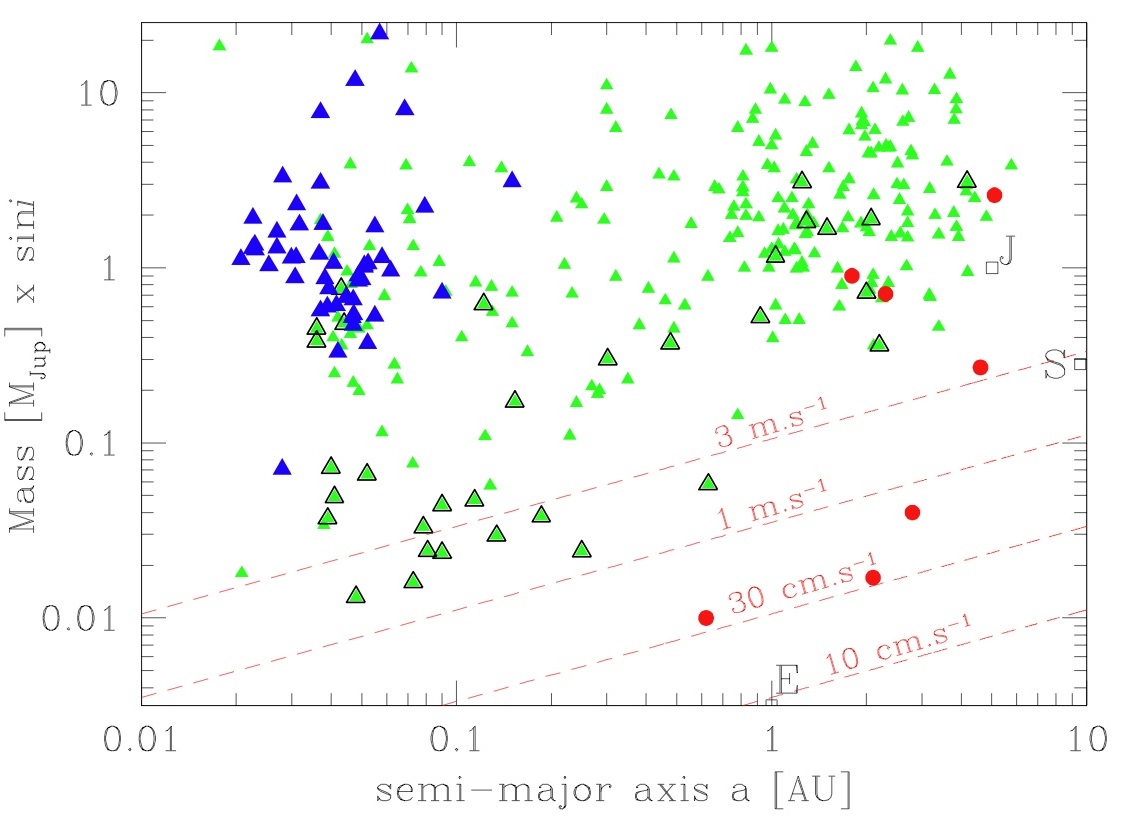
Mass-separation diagram of 300 known exoplanets. The triangles refer to exoplanets found by radial velocities. The dark triangles refer to transiting exoplanets. The circles refer to exoplanets found by microlensing. The bold triangles correspond to exoplanets discovered with HARPS. Lines of radial-velocity semi-amplitude of 3, 1, 0.3 and 0.1 m/s are shown, assuming a 1-Msol primary star (adapted from Bouchy et al. "The HARPS search for southern extra-solar planets. XVII. Super-Earth and Neptune-mass planets in multiple planet systems HD 47186 and HD 181433", 2009, A&A, 496, 527).
Figure 4.
Expected planet population to be detected by Doppler spectroscopy, after applying observational limits for radial velocity measurements, with the HARPS/3.6m (precision of 1 m/s; left), ESPRESSO/VLT (precision of 10 cm/s; middle) and CODEX/E-ELT (precision of 1 cm/s; right) spectrographs. For a larger (readable) version of the figure, click on it. [Credits: Stephane Udry. See also Mordasini et al. 2009, A&A, 501, 1161].
-
Galactic archaeology: unravelling the assembly history of the Milky Way with nucleochronometry.
How galaxies assembled and came to look the way they do is another of the big questions in Astronomy. Much has been learned in this respect from our own Galaxy which we can study in so much more detail than other galaxies. CODEX will take the sensitivity with which weak features of rare isotopes in stellar spectra can be studied to new limits. This should turn nucleochronometry - the equivalent of dating materials on the Earth using radioactive nuclides - into an accurate quantitative astronomical tool. The resulting precise age determinations of stars should lead to substantial progress in unravelling the assembly history of the Milky Way.
Figure 5.
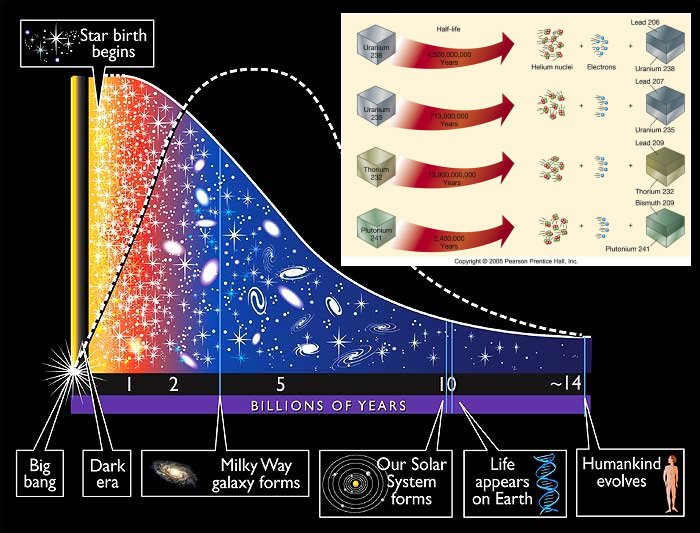
Probing the Milky Way with Galactic archaeology.
Figure 6.
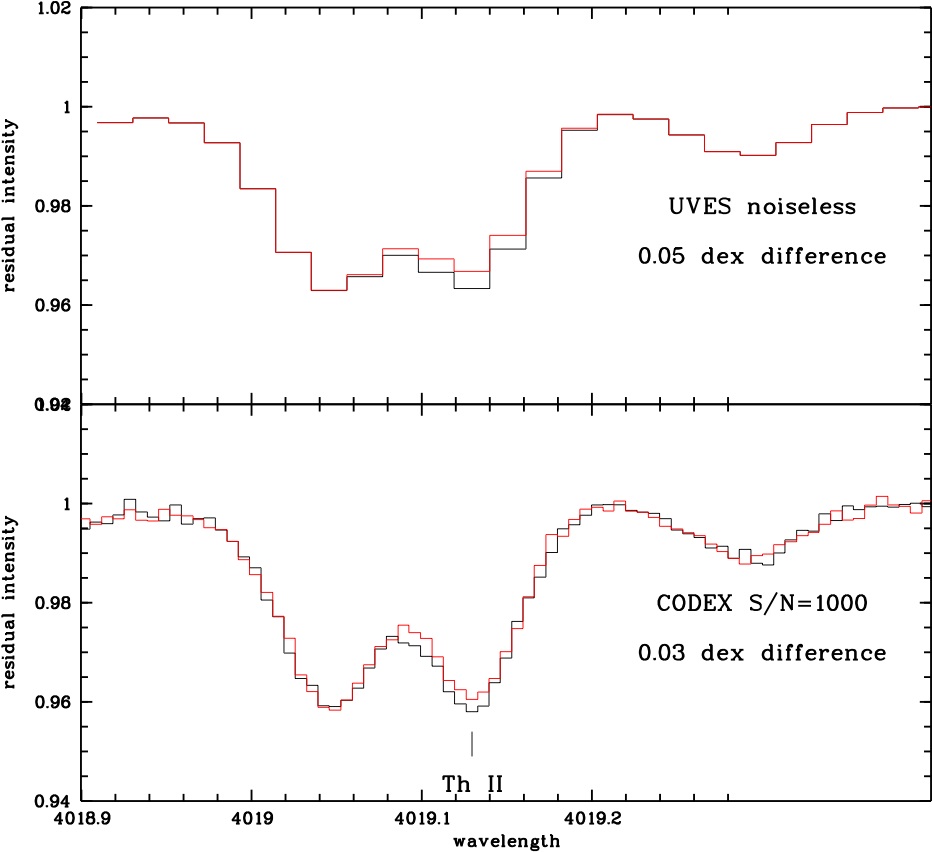
Comparison of the performance of UVES (top panel) and CODEX (bottom panel). With UVES an accuracy of 0.05 dex is not attainable even in the absence of noise. With S/N = 1000 CODEX will reach an accuracy of 0.03 dex.
-
Probing the interplay of galaxies and the intergalactic medium from which they form.
The formation of the first autonomous sources of radiation, stars and black holes, will have led to the heating, reionization and pollution of the intergalactic medium with metals. The sensitivity of CODEX to the expected weak absorption features of residual metals in the low-density intergalactic medium thus opens a window into this important period in the history of the Universe. CODEX will allow us to study the interplay of galaxies and the intergalactic medium from which they form in unprecedented detail.
Figure 7.
Pictorial view of the set of multiple lines to probe the nature and effects of galactic winds on the intergalactic medium. The two white boxes illustrate how the CIV absorptions due to galactic winds may change with impact parameter. For a larger version of the figure, click on it.
Figure 8.
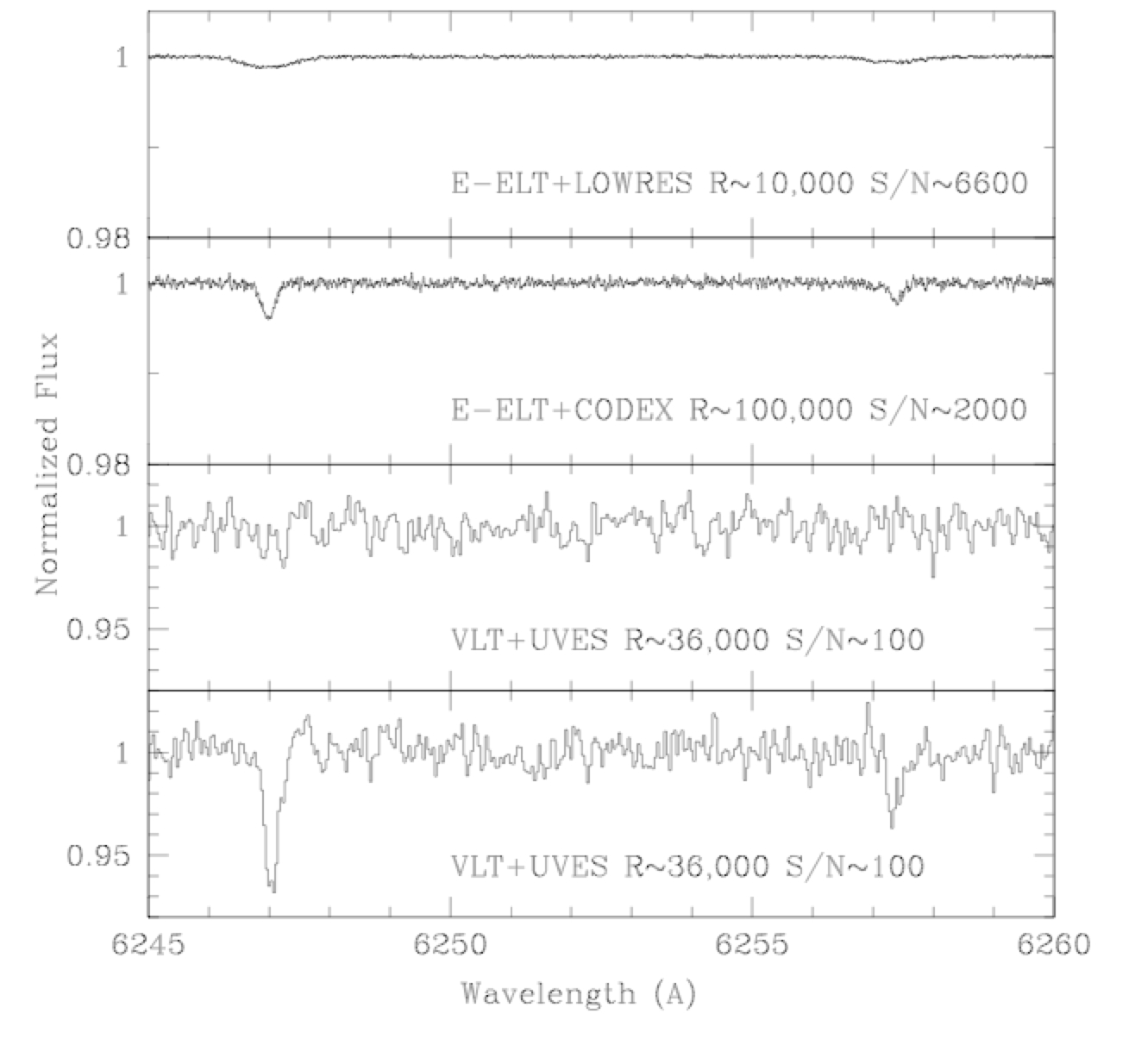
Detecting weak CIV lines with CODEX at the E-ELT and with UVES at the VLT.
-
Testing fundamental constants: taking the test of the stability of fundamental constants to new limits.
The values of many fundamental constants in physics have little if any theoretical explanations. Fundamental constants have thus long been speculated to vary in space or time or both. A discovery of such variations would be a revolutionary step and would almost certainly lead to the development of new Physics. The current evidence for small variations of the fine structure constant on cosmological timescales from studies of QSO absorption spectra is intriguing but rather controversial. CODEX will take tests of the stability of fundamental constants to largely improved new limits.
Figure 9.
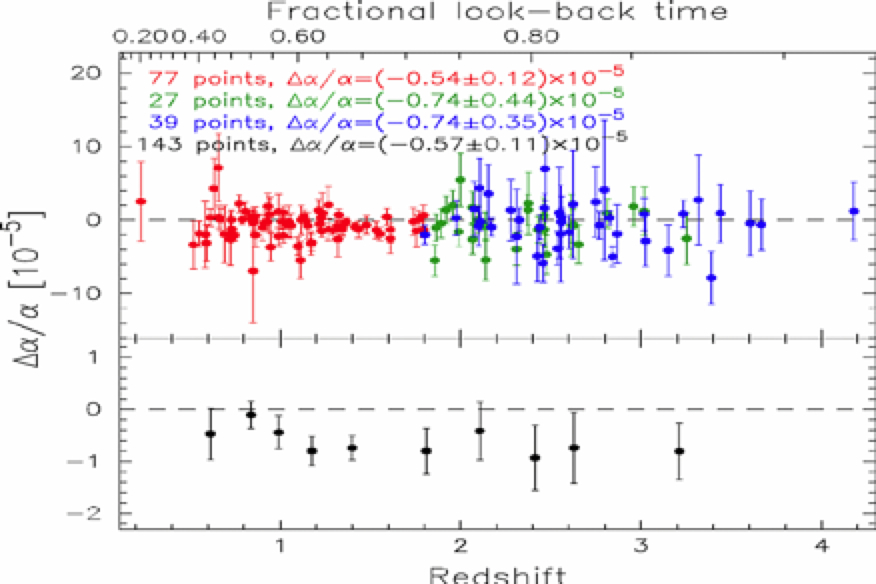
Figure 10.

Expected wavelength accuracy with CODEX at the E-ELT for a single Gaussian absorption line with a Doppler parameter b = 2 km/s as a function of the exposure time for QSOs with magnitudes of V = 16 (lower red curve) and V = 17 (upper blue curve).
